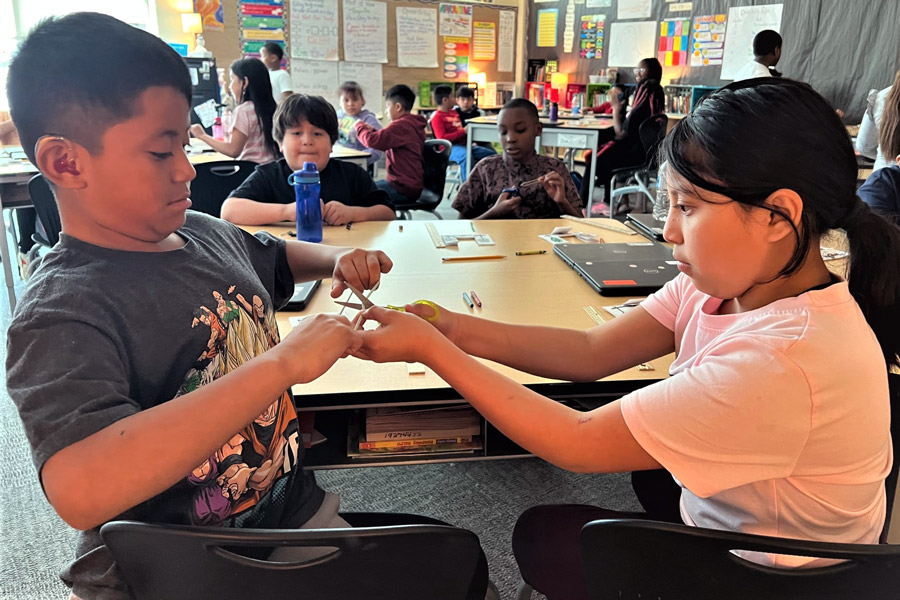Grand Rapids — After attaching a rubber band, Dickinson Academy fourth-grader Alan Perez pulled his fun, fast Twist-o-Matic amusement ride, let it go and watched it bounce and twirl.
His classmates, Claberneta Brown and Joelle Williams, hung their scissor-cut and crayon-colored paper rides off the side of their desks from rulers. They twisted the rubber bands their rides were taped to as tightly as possible and released, counting the number of times their creations spun in a full circle.
“It went a little faster with the thicker rubber band,” said Joelle, who was testing whether the ride spun faster when attached to a thick or thin rubber band.
After an hour of learning about energy — and various sources that provide fuel, like springs, batteries and gasoline — students experimented with how energy stored in a rubber band can make something twirl and jump. Their goal was to figure out how to make the fastest, most fun ride possible.

The dizzying lesson in teacher Lauren Shane’s classroom centered on how energy powers everything from cars to the human body. The class was completing a Mystery Science lesson called “Energizing Everything.” Part of Discovery Education, Mystery Science is a hands-on science curriculum that aligns with Next Generation Science Standards.
The class discussed how phones charge, how wind-up toys move and how stretching a slingshot can really make something fly.
“If we take a spring and condense it and we push it really hard together, what’s collecting in there?” Shane asked.
“Energy!” the class answered.
“If we take a rubber band and we pull it apart, what’s collecting?”
Energy!” they answered again.

Shane told them to wear their scientist hats as they tested and retested how to make their ride spin the fastest. Scientists “often go through dozens of hypotheses, if not more, before they land on the answer to a question that actually works,” she said.
After their Twist-o-Matic testing, students wrote about how they would make a fast, fun ride of their own: “I would use gears and a machine so I can control how fast it goes,” wrote one student.
Fourth-grader Tony Cuveas said he likes the experiments they get to do at school. Among other lessons, the class has also created paper cup telephones to test sound and vibration, built a model of the eye when studying the human body and made models of waves when studying high and low sounds.
“It’s really creative. You do cool activities and it makes us learn,” Tony said.
Read more from Grand Rapids:
• Learning about the art of the possible
• Planting seeds of interest









